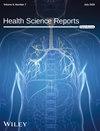Clinical and Preclinical Evidence on a Novel Percutaneous Pulsatile Ventricular Assist Device (PulseCath): Protocol for a Scoping Review
Abstract
Background and Aims
Temporary mechanical circulatory support (tMCS) devices play a crucial role in improving survival for patients with hemodynamic instability by providing cardiac assistance, and may serve as either a bridge to recovery or destination therapy. Recently, the PulseCath (iVAC2L and iVAC3L) has been introduced into the broader tMCS landscape. Due to its ease of implantation and low cost, it appears to enhance and complement the spectrum of tMCS devices. This planned scoping review aims to summarize the potential applications and reported side effects of PulseCath, while elucidating its underlying pathophysiological principles and hemodynamic effects, incorporating both preclinical in vivo and clinical published data.
Methods
We will perform a scoping review in accordance to the JBI methodology and the extension for Scoping Reviews of the PRISMA checklist. We will conduct a comprehensive search of PubMed/MEDLINE, EMBASE, Cochrane Central Register of Controlled Trials, Web of Science, Scopus, and Google Scholar (from their inception until February 28, 2025) to identify and retrieve preclinical in vivo and clinical investigations on the implantation of the PulseCath. EndNote X9 and Rayyan softwares will be used to aid article selection. Standardized forms will be employed for subsequent data charting and extraction. The ROBINS-I and RoB2 tools will be employed to perform a formal assessment of the risk of bias of included studies.
Results
Included studies will be categorized into two groups: preclinical in vivo and clinical. The clinical studies will be further classified according to implantation strategy, either pre-emptive or bail-out. The main findings from the selected studies will be presented through a narrative synthesis. If sufficient homogeneity exists among the studies, the presentation of quantitative data will be conducted. Tables and figures will be used to aid in the illustration of the findings.
Conclusion
The planned scoping review will systematically examine the existing evidence on the hemodynamic effects, pathophysiology, and potential complications of PulseCath, ultimately seeking to delineate optimal clinical settings for its use. The findings could highlight research gaps in tMCS support and expand the clinical application of PulseCath, thus improving patient outcomes and enhancing clinicians' understanding of this novel device.


 求助内容:
求助内容: 应助结果提醒方式:
应助结果提醒方式:


